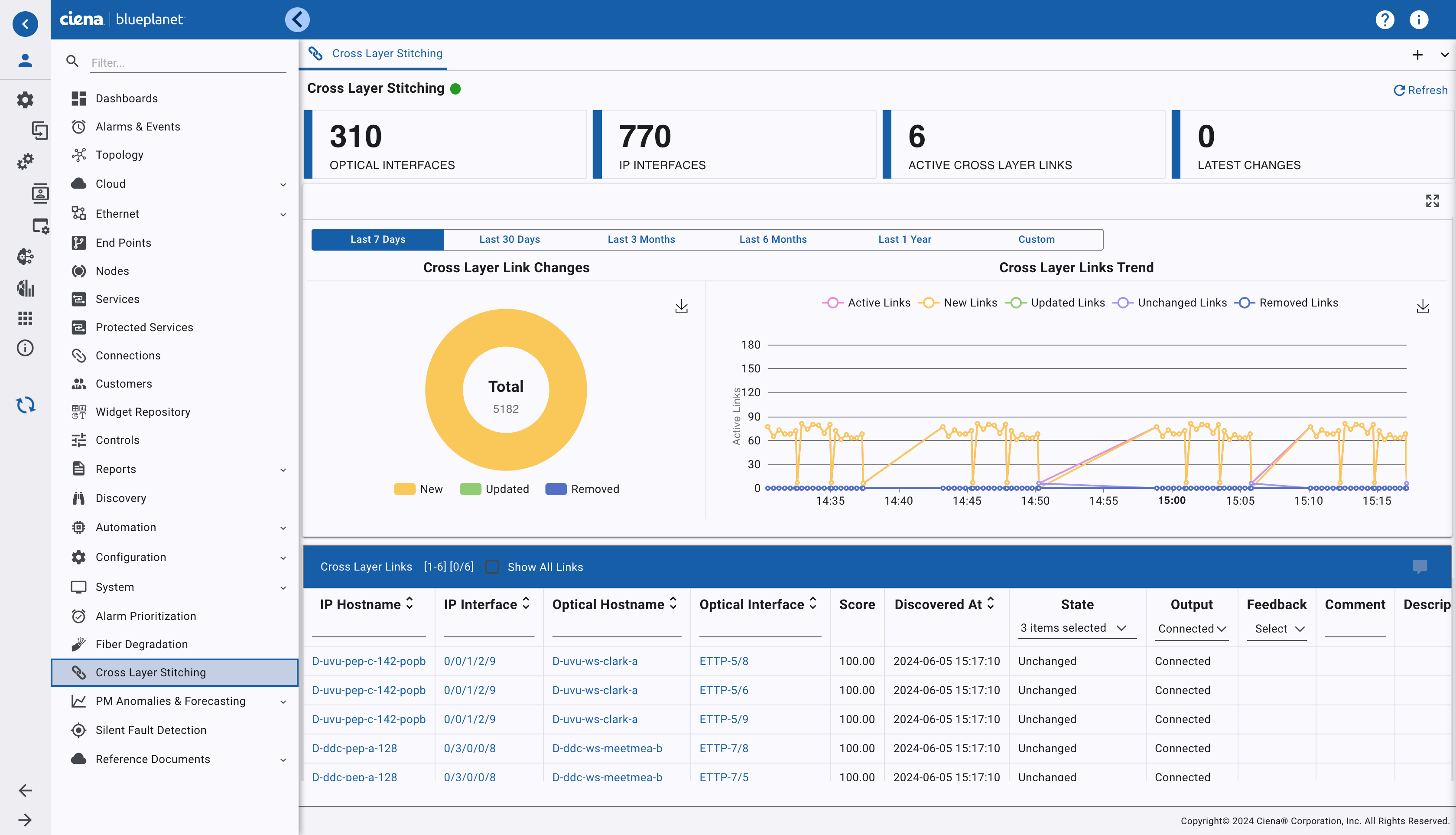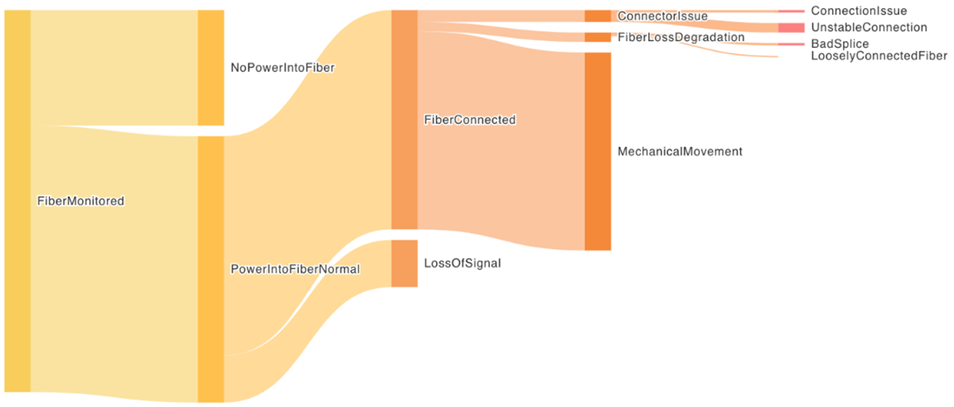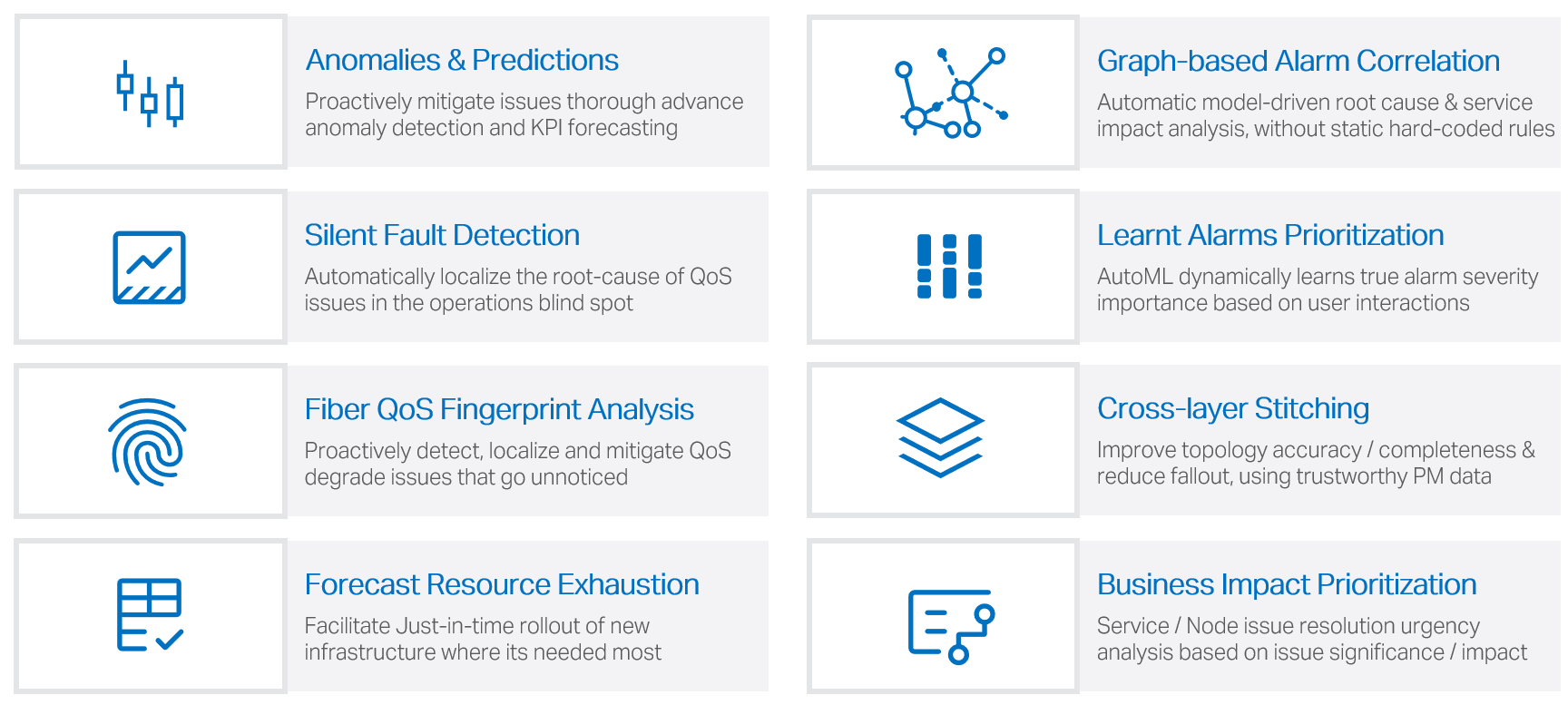Bringing AI options to AIOps
As Communication Service Providers (CSPs) adopt Artificial Intelligence (AI) models and AIOps, Blue Planet believes it is critical that they are not locked into a single, ‘black box’ approach. In this blog, Gabriele Di Piazza explains how operators can leverage pre-built use cases in Blue Planet’s new AI Studio while also using their own and third-party AI models.
AI is becoming a core ingredient for intelligent automation. From enhancing user interaction to navigating complex, end-to-end network management challenges, it is becoming intrinsic to how CSPs architect their network operations.
That’s why Blue Planet decided to leverage AI as a central capability across the Blue Planet portfolio and created ‘AI Studio’ as part of our new Cloud Native Platform (CNP). As I explained in a recent blog introducing AI Studio, the best way to think of the new software environment is as an intelligent workbench for implementing and managing AI models. This includes Generative AI (GenAI) language models, which offer a new way to interact with large data sets.
Instead of hard-coding AIOps use cases into individual Blue Planet applications, the AI Studio acts as a hosting and instantiation environment that allows our experts to build use cases that integrate with the Blue Planet Inventory, Orchestration and Assurance products, while also allowing customers to leverage their own Data Science/AI teams and leverage and control their own models and AI pipelines.
Using the AI Studio for pre-built AIOps use cases
Today, the AI Studio offers CSPs a growing number of pre-built, out-of-the-box AIOps use cases. Drawing on the Blue Planet team’s years of experience applying Machine Learning (ML), analytics and other AI technologies, these use cases enable CSPs to apply AI across the full-service lifecycle to improve customer experience, speed time to market, and lower operating costs.
Some use cases focus on prediction and prevention of faults, while others help to forecast traffic growth and manage services across network layers and domains (access, transport, core, and cloud networks, for example). Figure 1 shows the full set of use cases, with four key capabilities explained below.
Figure 1. Blue Planet’s AI Studio provides pre-built AI/ML use cases to help CSPs improve customer experience and increase automation.
Cross-layer Stitching
Cross-layer Stitching addresses a costly fallout problem for CSPs, due to decisions made based on inaccurate and incomplete inventory topology data. For example, fallout happens when orders for new services, upgrades or repairs are delayed or fail because of errors due to data quality. It can lead to lost revenues, increased operating costs and customer churn.
For this use case, Blue Planet uses ML to build an AI Model that discovers cross-layer and same-layer connections by analyzing trustworthy performance patterns of network traffic crossing multiple domains, which typically contain equipment provided by multiple vendors. CSPs can use these insights to speed up service fulfillment, eliminate unnecessary truck rolls, and use automation to assure services faster.

Figure 2. Example of AI Studio’s Cross-layer Stitching summary dashboard view
Fiber QoS Fingerprint Analysis
Using ML to automate detection of the root cause of faults in fiber networks is a key use case in telecom networks where nearly everything is connected by fiber. A typical CSP has thousands of fiber connections between points of presence, as well as within buildings and racks. Blue Planet’s Fiber QoS Fingerprint Analysis monitors millions of performance management (PM) metrics across optical interfaces to identify root-cause ‘signatures’ for issues such as loose or dirty connectors, poor repairs, or gradually increasing span loss, that might otherwise go undetected. Then the system automatically raises a trouble ticket for resolving these issues, which may be impacting the quality of voice calls or other services.

Figure 3. Example of Blue Planet’s Fiber QoS Fingerprint Analysis use case
Silent Fault Detection
Silent Fault Detection (SFD) is the process of identifying network faults that don’t trigger alarms or notifications. For example, in a Passive Optical Network (PON), devices such as splitters and optical distribution frames don’t generate telemetry.
By analyzing service-related alarms, Blue Planet uses AI triangulation to localize the probable root cause of issues, even when there are no explicit fault alarms. This same capability can also be applied to other access services, for example, 5G network slicing, where the issue isn’t so much a lack of alarms, but rather, there are too many symptomatic low-level events that go unnoticed in traditional NOCs or SOCs.
Graph-based Alarm Correlation
Traditionally, telcos have relied on rules-based alarm correlation to manage the alerts generated by network elements. But as network complexity increases, it becomes increasingly difficult to maintain the rules. When networks become fully programmable, it will be impossible to use static rules to manage a dynamic environment.
Graph-based Alarm Correlation is a unique Blue Planet capability that allows CSPs to perform root-cause analysis and service-impact analysis without hard-coded rules. We use a graph model of the relationships between multi-layer services and resources to provide a holistic service-centric view to automate assurance. This allows us to navigate top-down from service impacts to network issues and bottom-up from network faults to service impacts.

Figure 4. Example of Blue Planet’s Graph-based Alarm Correlation use case providing a top-down dependency tree from service impacts to network issues.
‘Bring Your Own AI’
We also offer a “Bring Your Own AI” capability that opens this environment, allowing our customers’ developers and data scientists to execute and maintain their own or 3rd party AI models. AI Studio also supports Large Language Models (LLMs) as a gateway, allowing CSPs to securely and privately use their preferred LLM, like OpenAI’s GPT, Google’s Gemini, Open Source models such as Llama and the telco-specific LLM from the Global Telecom AI Alliance (GTAA), among others.
This flexibility is key. It means that Blue Planet customers will never be locked into a specific AI solution or LLM. It serves to future-proof the Blue Planet Cloud Native Platform (CNP), with Blue Planet applications capable of integrating with any new AI innovation that comes along.
Implementing GenAI
In the near future, GenAI will help us improve on all these use cases and create more advanced intelligent automation. Within the next couple of years, we believe that the way CSPs engage with support systems will evolve dramatically, moving away from traditional user interfaces and toward more natural language-based interactions.
One of the first features we’re working on includes a GenAI-powered interface to Blue Planet documentation, CSP playbooks, and vendor documentation, which will allow operators to ask questions to accelerate user productivity. We are also exploring the use of GenAI to solve more complex challenges like network configuration and management, which requires code generation.
Blue Planet currently maintains a vast library of more than 3,000 resource adapters (RAs) for various network technologies and devices. By leveraging GenAI, we believe we can accelerate the code generation and deployment of these adapters. We also plan to empower GenAI to start generating recommendations and configurations for our customers’ networks while understanding the need to build confidence and trust in these new AI-enabled solutions.
The AI Studio and the use cases I’ve described are in various states of testing and deployment with our customers today. Contact us to find out how your company can begin leveraging AIOps to optimize your operations or to hear more about our plans for GenAI.

